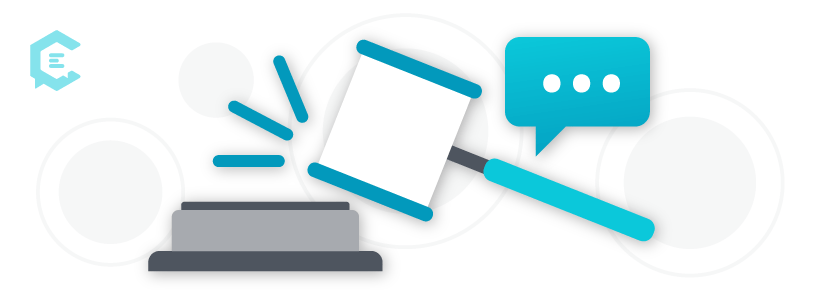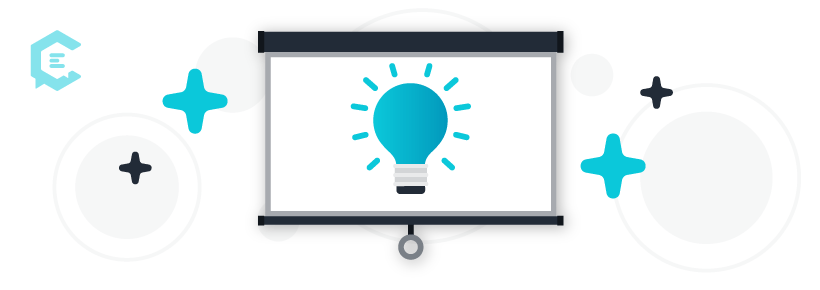Brand ambassadors are people who have a genuine interest in a company’s product and willingly advocate on behalf of the brand. Starting a brand ambassador program can harness the enthusiasm of multiple devotees and make it easy for companies to guide and reward its brand’s biggest and most influential fans.
Word-of-mouth has always been important to brands, but it hasn’t had the widespread, palpable impact on business like it has today. With people constantly connected to the internet through laptops and mobile devices, there are more opportunities for your fans to influence the purchasing habits of your potential customers in their networks. To fully realize the power of this influence, brands must formalize their brand advocacy marketing programs.
Why consider using influencer marketing and a brand ambassador program?
People face an overwhelming amount of ads and messages every day. Your brand is just one of the millions, and people are growing weary. These stats paint a dismal picture:
- Ad-blocking software usage has risen 30 percent according to PageFair’s 2017 Global Adblock Report.
- Banner blindness still presents a problem according to Nielsen Norman Group. Comparing 1997, 2007 and a recent study shows people continue to ignore banner ads at similar levels today as they did ten and 20 years ago.
- Brands’ organic reach on social media has declined dramatically, especially on Facebook.
With declines in brand trust and limited ability to reach audiences, marketers must begin to leverage the influence of brand advocates, which can deliver ROI of 11x annually according to TapInfluence.
Is an influencer marketing program right for your brand?
Before you start making up your list of dream influencers, take a step back and think about whether or not you need an influencer program.
- Do you operate in a highly competitive or commoditized industry?
- Does purchasing a product like yours require a significant monetary investment or require a considerable level of trust?
- Does your audience need to appeal to a particular crowd — luxury shoppers, fashionistas, executives?
If one or more of the scenarios above fits your business, your next step is to determine your brand’s readiness.
- Have you nailed down your brand promise, value proposition, and design? These things matter. An influencer worth working with will care about how well you’ve got your act together. Unclear content, mixed messaging, and bad user experience on your site will work against you.
- Do you have a presence on social media? While you don’t have to have a mega following to work with influencers, you do have to make social media a priority. After all, social media is where many of your brand advocates will be spreading the word about your brand.
Get these two areas straight, and you’re ready to start planning for a brand advocacy program.
Think through legal and ethical issues
The Federal Trade Commission (FTC) is serious about disclosure.
In 2014, Sony Computer Entertainment America had to provide customer refunds for misleading advertising. Part of the issue concerned Sony’s agency, Deutsch LA, for urging its employees to generate awareness on social media. Unfortunately, the agency failed to instruct employees to disclose their relationship to the agency and client. Since that time, the FTC has settled charges with Warner Bros., Lord & Taylor and Machinima.
On the influencer side, the FTC settled its first-ever complaint against individual social media influencers and sent warning letters to 21 influencers in September 2017.
Truth in advertising — and the FTC considers influencer marketing a form of advertising — is a big deal. However, the lines can sometimes blur for brand ambassadors versus those who participate as a sponsored influencer. Intellifluence CEO Joe Sinkwitz shared the following insights on brand ambassadors versus sponsored influencers.
“The biggest difference, as I see it, between a brand ambassador and a straight sponsorship is the linear relationship between compensation received and work performed. For ambassadors, the relationship is more based on a mutual trust that the ambassador will receive access to the first products to show to their audience, will receive support from corporate to ensure messaging is aligned, and may of course also receive financial support; ambassadors do what they do because they believe in the product, with compensation as a secondary driver. With a straight sponsorship, the entire relationship is purely transactional. “
Sinkwitz went on to say that disclosure can sometimes become problematic for ambassadors compared to paid influencers. A paid influencer must disclose his or her relationship on the promoted post. A brand ambassador, on the other hand, may have a series of posts that aren’t necessarily going to be backed by any sort of extra compensation. “From an ethical perspective, within Intellifluence we’ll recommend that any compensation (money, product, support) be prominently disclosed on the initial tit-for-tat posting, with future disclosures made as a bolt-on for ambassadors, to remind an audience that a relationship between the brand and influencer/ambassador does exist.”
Sinkwitz explained that Intellifluence’s approach has helped influencers and brands overcome most ethical and legal conundrums without negative consequences to program success. “What we’ve found is there is no negative financial impact to disclosure, across the various social networks and blogs where we’ve been collecting our data. Most people seem to understand that a financial relationship exists, so the disclosure does not deter them, especially if the reviews provided are viewed as being honest.”
Steps to plan your brand ambassador program:
1. Convince the C-suite that influencer marketing is vital for your brand.
Unless you’re the primary decision maker, you will need to convince the executive team that a brand advocacy/influencer marketing program is right for your company. Put together a well-researched presentation that will help the executives understand how brand advocates can boost your sales and marketing efforts.
2. Define how a brand advocacy or influencer program aligns with corporate goals.
You likely had to do this when you pitched your idea to the executive team. If not, get deadly serious about this part. You don’t want to face the C-suite at the end of your program with nothing to demonstrate how advocates helped your brand.
Your metrics to monitor may include:
- Foot traffic or online traffic
- Leads, appointments/demos, and sales
- Employee recruitment (if employee advocates are part of your program)
- Media mentions in prominent industry or local news
Need a real-world example? Take a look at what Pepsi did with influencer marketing when it wanted to increase its sales to millennials at Walgreens. Pepsi’s #SayItWithPepsi promotion leveraged influential millennial creators to promote organic-style content (original blog posts, photography and branded video content) featuring the Pepsi emoji product to their millennial followers. Pepsi then worked with second-tier influencers to promote the first tier creators’ content. Overall, Pepsi drove sales at Walgreens via a campaign that resulted in 46 million impressions, and there were more than 50,000 engagements with campaign content.
Looking for a B2B example? In 2016, SAP invited 11 influencers to help the brand broaden its reach for its annual Sapphire conference. The influencers live streamed interview-based video content at the conference helping SAP reach 80,000 people who couldn’t attend the event.
In the two examples above, the businesses kept their campaigns incredibly focused on tight groups of influencers for specific events/locations. Other brand advocacy programs, such as the Hootsuite Ambassador program, include many more participants who advocate on behalf of the brand on an ongoing basis thanks to the brand’s development of an advocate community. Through the community program, a brand provides guidance, shares content, and develops contests that benefit influencers while supporting corporate goals.
3. Identify your influencers and advocates.
Your brand ambassador program should focus on people who have social influence with your ideal customers. To identify the right individual influencers, use your buyer personas as guides.
- Who are your ideal customers listening to for advice?
- Who among your employees, fans and ideal customers has social currency?
- Where are your ideal customers and prospects spending time online?
As you begin looking for ambassadors and influencers, keep in mind that you don’t have to rely on celebrities or preeminent industry experts only. You want authentic individuals with strong personal brands and legitimate followers who align with your company’s goals and brand values.
Finally, don’t forget about the power of employee advocates. Glenn Gaudet, CEO & Founder of GaggleAMP, told ClearVoice,
“People are much more receptive to other people than they are to brands or ads, and that’s why employees advocating for your brand is so powerful. There tends to be a level of trust you can get from other people that you just can’t get from a brand’s social account. That’s how your employees can expand your organization’s reach with more valuable connections than your brand ever could.”
4. Begin building relationships with your candidates on your preferred platforms.
Once you’ve identified your ideal ambassador candidates, start building relationships with them.
- Follow them on Instagram, YouTube, Twitter, Facebook, LinkedIn — whatever platforms you would like to see them use their influence on behalf of your brand.
- Take time to read and comment on their blog posts.
- Share their content on your social profiles (when to do so would make sense — remember, you are striving for authentic interactions with these people).
- Demonstrate a genuine interest in who they are and what they have to say.
Once you’ve vetted a potential ambassador, then you can invite him or her into your program. If you’ve got your eye on a celebrity influencer, you will need to work through gatekeepers — publicists, managers, agents.
Don’t want to deal with recruiting influencer talent? There are agencies and influencer-matching software platforms that can help you with this process.
5. Create influencer content and get feedback.
Influencer and advocacy programs don’t lessen the load when it comes to content creation; you may find yourself doing more.
In some cases, you can invite the influencer to create content. Just remember this advice shared with ClearVoice from Vengreso CMO Bernie Borges:
“It’s very important that a brand build strong relationships with their advocates with a ‘two-way street’ mindset. The brand needs to be mindful of engaging with advocates in ways that are valuable to the advocates. For example, inviting advocates to create content that enables them to demonstrate their expertise without expecting the advocate to directly promote their product. Advocates don’t want to feel like they’re being used to promote a brand. Rather, they want to be recognized as subject matter experts. Giving them an authentic and visible platform is a good way to build a relationship that is mutually beneficial.”
While user-generated content can be excellent, inevitably, some of your ambassadors will need your help. You will need material specifically created to support advocates as they talk about your brand. These types of content may include:
- Editable social media posts and images
- Talking points for blog posts to help influencers promote a new eBook, study, infographic, or product
- Guides and ideas for brand integration on visual platforms like Instagram or YouTube or audio formats such as podcasts
- Content (scripts, eBooks, etc.) tailored to a specific individual influencer
Your public-facing content marketing assets will be potentially useful to your ambassadors, but don’t take for granted that ambassadors will use them the way you expect if you don’t provide guidance. If you don’t have enough time or in-house talent to tackle influencer-specific content projects, work with freelance writers and designers to develop these elements.
Finally, don’t forget to invite brand ambassadors to participate in your brand’s content creation. Opportunities include podcast participation, presenting at your next webinar or conference, or providing an expert quote for an upcoming eBook. You’ll find that featuring influencers in your branded content will increase social shares, too. Who wouldn’t want to share excellent material featuring themselves as a thought leader?
6. Make it easy for your advocates to participate and share.
Merely asking people to advocate for your brand isn’t enough. You have to give ambassadors guidance about what to share, when to share it and where to share it. There are several ways to accomplish this:
- One-to-one outreach with influencers on email and social media
- Invitation-only ambassador groups on LinkedIn, Facebook, or Google+ where you share updates with the ambassador community at large
- Advocacy platforms such as GaggleAMP and SocialChorus (if your employees are part of your ambassador program)
- Ambassador management platforms like Influitive and Intellifluence
Most importantly, give your ambassadors guidelines, structure, and education.
- Communicate your brand’s vision and mission
- Give them access to new content, sneak peeks at new service or product features
- Provide an easy way to find and share the right messages at the right time with their audiences
If you are working with individuals on custom campaigns, outline clear objectives, tasks, and due dates.
By creating a formal program, people understand expectations, have access to on-brand messaging, and are motivated by your brand’s recognition and appreciation of the value they bring to your business. A formal program strengthens existing brand ambassador relationships and attracts interest from other influencers to your program.
Are influencer programs just for B2C brands?
Not really. The point of a brand ambassador or influencer marketing program is to leverage credible people to connect with other people who could benefit from your product or service. The primary differences between a B2B and a B2C program will be based on the types of people and platforms you select.
With B2C, you can put influence ahead of formal expertise. A mommy blogger with 10,000 website visitors per month and 100,000 followers on Instagram may be an ideal candidate for a fruit juice company.
For B2B, on the other hand, your candidate selection should place expertise ahead of influence. An industry-recognized food scientist with a couple of thousand combined Twitter and LinkedIn followers may be perfect for a food ingredients and chemicals manufacturer.
Are you ready for brand ambassadors?
You know the power of word of mouth, and now you’ve got a few extra stats and resources to help you get started with a program that turns occasional word-of-mouth referrers into an organized social army. Cultivating brand ambassadors isn’t necessarily easy, but it is worthwhile. I’ll leave you with a few great examples of winning brand ambassador programs. Check them out:
- Lululemon Ambassadors
- Hootsuite Ambassador Program
- Yelp Elite Squad
- Maker’s Mark Ambassadors
- Blackbaud Champions
Also check out an insider’s interview with Ultimate Frisbee star-turned-influencer Brodie Smith
Brodie Smith is an Ultimate Frisbee legend and a trick shot master — and he knows a thing or two about influencer marketing, too. His social media followings are sizable — he has 1 million+ followers on Instagram and Twitter each. And his 1.8M+ subscribers on YouTube are a thing of dreams for companies looking to cultivate engagement. Learn what Brodie has to say about storytelling for brands, what makes a good influencer fit and more.








